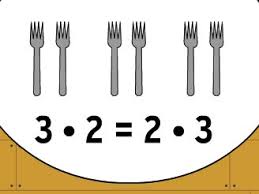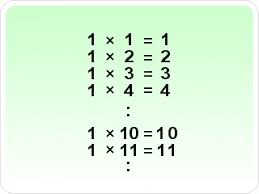Properties, properties. So many to teach and so little time. Not to mention what an abstract concept it is for students to understand. Here are some tricks I use when teaching the properties of multiplication:

1. Commutative- Before I start I have students use a Thesaurus to find lots of synonyms for the word talk. We make a word web of all of the words. One of the words is always communicate. We talk about what communicate means. It means to say something by talking, writing, using sign language.... Then I show the problem 4 x 3= and I ask them what is another way we can say the same problem...3 x 4. We can show that the 2 problems communicate the same thing like this 4 x 3=3 x 4. Since the two are communicating the same things we say that they are the Commutative Property-the order in which you multiply two factors does not matter the product will always be the same.

2. Associative- We start by talking about friends. Friends are the people we choose to be with. When we are on the playground or in the lunchroom, we group ourselves with our friends. Another word for grouping is associating. We associate with our friends. Associate means to group. When we multiply 3 or more numbers, we can't multiply all of them at the same time so we group them or associate them. To show the grouping or associating, we use parentheses to show which numbers we are grouping together first: 3 x (5 x 6)=3 x 30=90. The Associative Property says that it does not matter which two numbers you group together or associate first, the answer will still be the same. We show the Associative Property like this: 3 x (5 x 6) = (3 x 5) x 6. When we are multiplying the factors 3, 5, and 6, it does not matter which two we group or associate together first. When we find the final product, the answer will always be the same.

3. Identity-I like to talk about secret identities. The kids really get into it: Spiderman is Peter Parker, Batman is Bruce Wayne, Superman is Clark Kent, Hannah Montana is Miley Cyrus....They are not two different people. They are the "1" and the same person. Their secret identities (Peter, Bruce, Clark, Miley) are their real identities. It is who they are and adding a costume or a wig does not change who they are. The Identity Property of multiplication shows that a number can stay the same when we multiply it by a certain factor. Then I show them the following facts: 4x0=0, 4x1=4, 4x2=8, 4x3=12. Which one allowed the 4 to keep its identity? 4x1=4. The identity property states that any number multiplied by a factor of 1 stays the same.
I also use this packet that has tons of printables, activities, games, student notes, an assessment, and so much more to teach students about the properties of multiplication.


You can find the
Popping about the Properties of Multiplication at my TpT store.
See how I use all of this in my classroom at my classroom website,
Mrs. Hill's P.I.R.A.T.E.S.

















